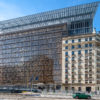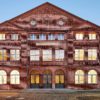A world away from the cosmopolitan capitals we would
usually associate with modern art, lies the city of Eskişehir,
where a spectacular new museum building is making
its mark on the Anatolian landscape. The city’s striking
new landmark is characterised by an ensemble of eleven
square-edged timber cubes, all nested inside one another.
Tradition and transparency are not mutually exclusive – as is demonstrated by this spectacular new museum in Eskişehir, Turkey. Behind the cladding made from solid square-edged timber, a glazed façade provides heat insulation and fire protection.
The Japanese architects Kengo Kuma and Partners
see their design for the Odunpazarí Museum of Modern
Art as an homage to the region, where there is a centuries-
old tradition of woodwork and wood trading. The
museum is named after its location on the former wood
market in Eskişehir (Odunpazarí), around which the museum
district is growing.
New perspectives
The university city of Eskişehir is already home to numerous
museums; including an archaeological museum,
a glass and ceramics museum, and a museum of technology.
Nothing unusual there. And then comes the Odunpazarí
Museum of Modern Art, adding a whole dimension
to the district. The new gallery houses an collection
of modern art with great international significance, and
includes exhibits dating from the 1950s to the present day.
It was put together by architect and building contractor Erol Tabanca, whose initiative is also responsible for the new museum building in the heart of the old town. The aim of this self-confessed patron of the arts is to challenge people with new perspectives, and – at least as far as the architecture of the new building is concerned – he has achieved just that. With its sensational architecture, the city is no doubt hoping to cultivate a sort of “Bilbao effect” in Eskişehir – using cultural tourism to generate an economic upswing. Opened to the public on 28 September 2019, the Odunpazarí Museum of Modern Art boasts a multitude of exhibition rooms, with three whole floors of diverse artworks for visitors to explore. The topography of the site, which has a height difference of several metres, led to a design that includes two entrances. The main entrance, with the foyer and reception area, is on the lowest level. A second entrance is located one level above that on the plaza, where visitors are also attracted by the museum café. On this level and the two floors above is where you find the permanent exhibition rooms, as well as events and office space. The atrium, which extends across all levels, not only brings daylight into the interior of the building, but also provides visitors with an infinite variety of perspectives on the exhibition.
It was put together by architect and building contractor Erol Tabanca, whose initiative is also responsible for the new museum building in the heart of the old town. The aim of this self-confessed patron of the arts is to challenge people with new perspectives, and – at least as far as the architecture of the new building is concerned – he has achieved just that. With its sensational architecture, the city is no doubt hoping to cultivate a sort of “Bilbao effect” in Eskişehir – using cultural tourism to generate an economic upswing. Opened to the public on 28 September 2019, the Odunpazarí Museum of Modern Art boasts a multitude of exhibition rooms, with three whole floors of diverse artworks for visitors to explore. The topography of the site, which has a height difference of several metres, led to a design that includes two entrances. The main entrance, with the foyer and reception area, is on the lowest level. A second entrance is located one level above that on the plaza, where visitors are also attracted by the museum café. On this level and the two floors above is where you find the permanent exhibition rooms, as well as events and office space. The atrium, which extends across all levels, not only brings daylight into the interior of the building, but also provides visitors with an infinite variety of perspectives on the exhibition.
Extra-high VISS façade pivoting door
When it came to implementing the huge glass façades
in the entrance areas and to the terraces, the architects
chose the VISS profile system VISS steelfrom Jansen. VISS offers
highly thermally insulated façade constructions with
‘Passivhaus’ energy efficiency certification, which is an
absolutely must with regard to the harsh Anatolian winters.
The post and mullion construction with double-insulated
glass (10/16/66.2 millimetres) has an insulation
value of 1.4 W/m2K. The 39 millimetre-thick, 1600 x 3100
millimetre panes are held in place with profiles that are
extremely slim by comparison. Here, the architects opted
for Jansen VISS with a face width of just 50 millimetres.
The VISS façade pivoting door in the main entrance
on the bottom floor is a bespoke construction designed
especially for this building. With a height of 4415 millimetres,
two panels measuring 2140 millimetres each and
a forend width of just 140 millimetres, it continues the
generous contour of the VISS façade in the entrance area.
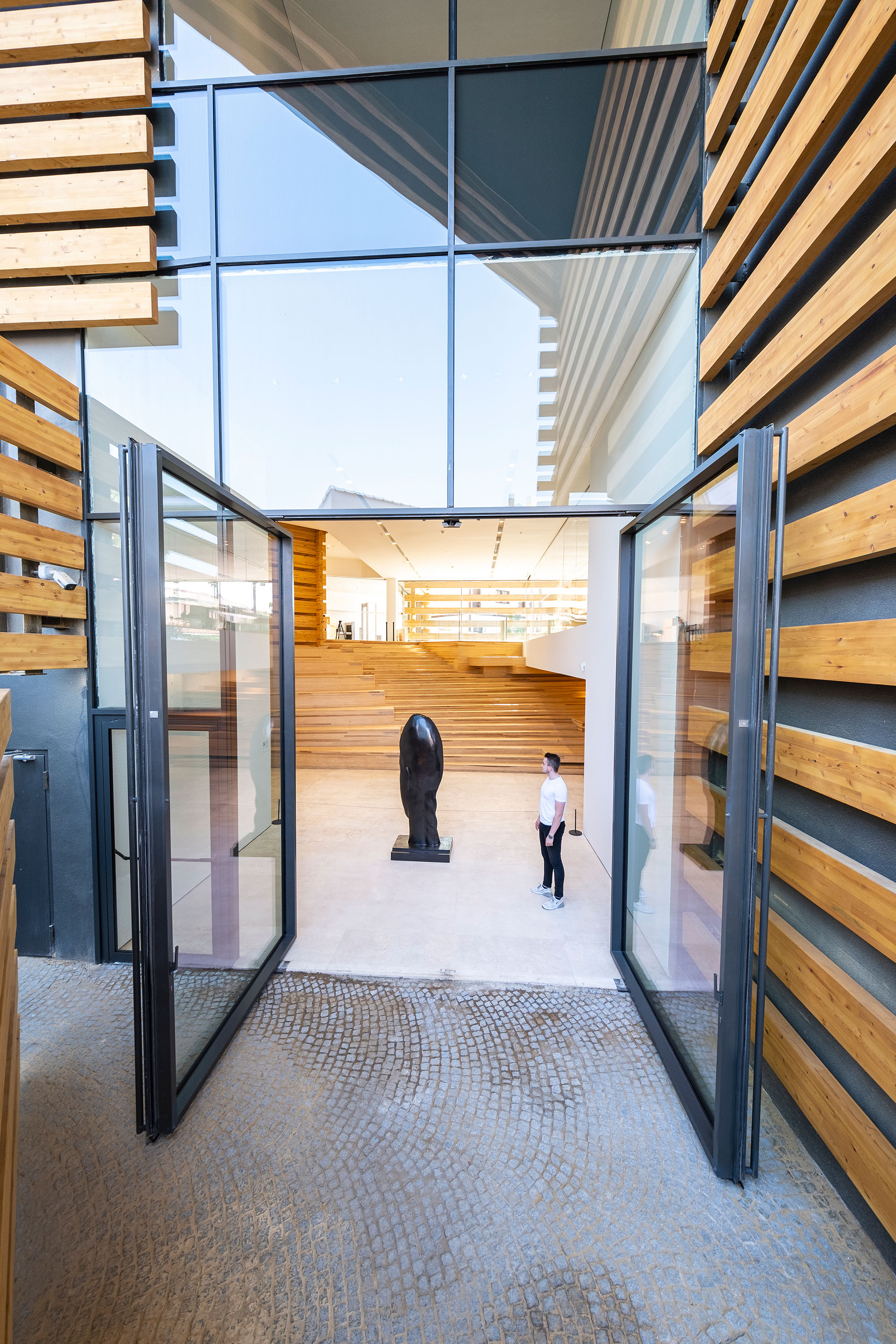
The VISS façade pivoting doors of the
main entrance on the bottom floor
are almost 4.50 m high. The bespoke
design is continued with the generous
contour of the VISS façade in the
entrance area.
First-class fire protection
It goes without saying that, with such an excessive use
of wood, the architects needed to pay particular attention
to the issue of fire proofing. What sets Jansen apart
when it comes to fire safety is that its solutions allow for
complete façades, including doors and entrance areas,
can be implemented as one cohesive aspect, despite different
sections being subject to different safety requirements.
Here, the glass façade between the events space
and the terrace had to meet the EI60 fire safety standard.
Thanks to the VISS Fire steel profile system, it could be
produced in line with the generous grid of the other VISS
façades. Moreover, when it came to producing the double-
leaf, outward-opening revolving doors, the use of Janisol
C4 EI60 with the same profile view and installation
depth ensured they blended in visually with the rest of
the façade.
Whether it is the spectacular new museum building or the wide-ranging art collection that draws in the crowds, the fact is that around 140,000 art and architecture enthusiasts visited the Odunpazarí Museum of Modern Art of it being open. Unfortunately, the museum also had to close its doors temporarily due to the coronavirus pandemic. However, the numbers of visitors in the first half of the year leave no doubt that the “Bilbao effect” is working. (AMR)
Whether it is the spectacular new museum building or the wide-ranging art collection that draws in the crowds, the fact is that around 140,000 art and architecture enthusiasts visited the Odunpazarí Museum of Modern Art of it being open. Unfortunately, the museum also had to close its doors temporarily due to the coronavirus pandemic. However, the numbers of visitors in the first half of the year leave no doubt that the “Bilbao effect” is working. (AMR)
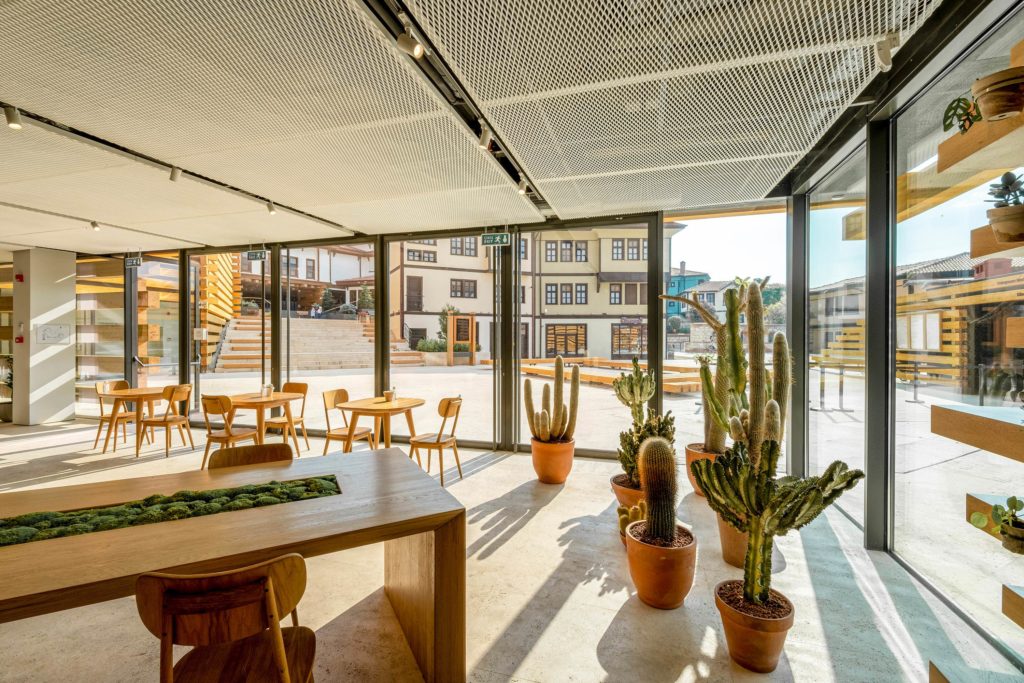
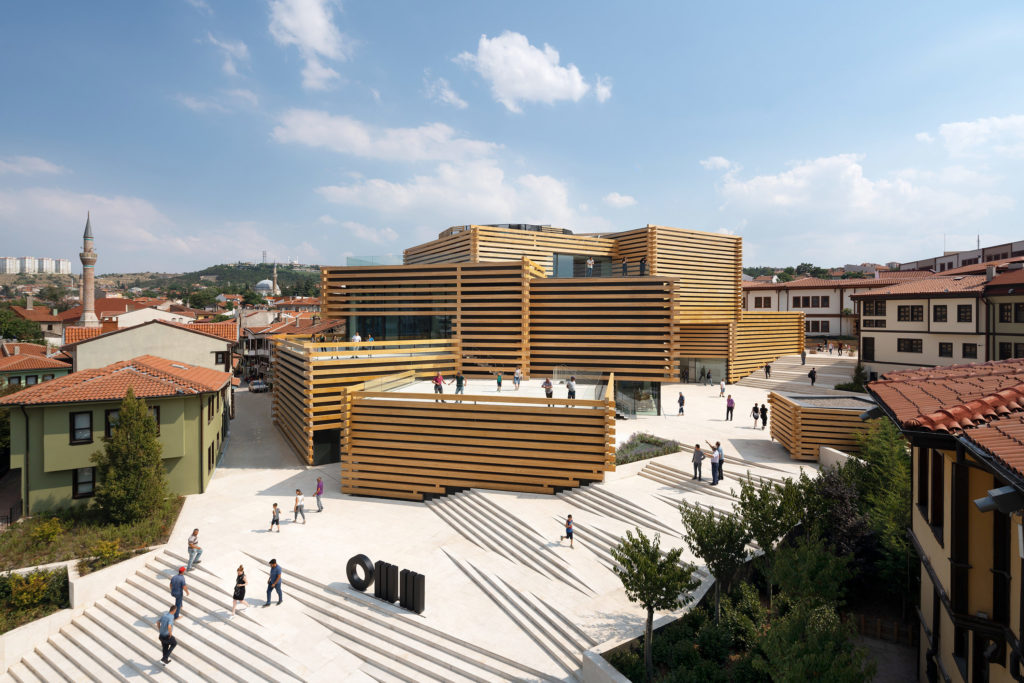
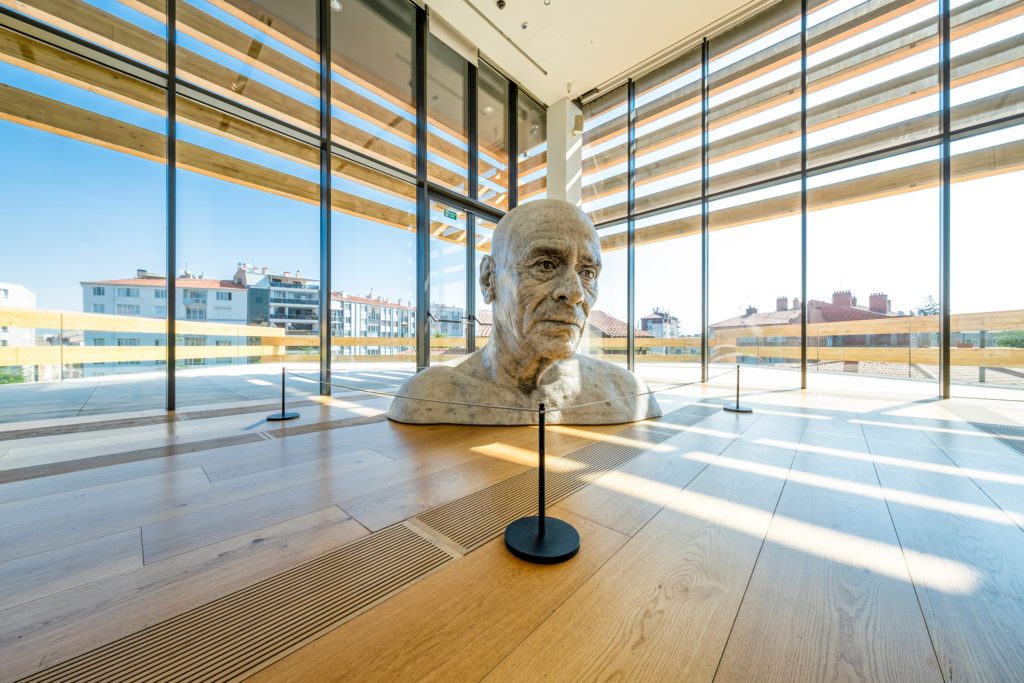
PROJECT DETAILS
Client
Polimeks Holding, Istanbul
Architects
Kengo Kuma and Associates , Tokyo
Façade construction
Bisam Façade Systems, Istanbul
Steel profile systems
photography
© Proje Çekimi
